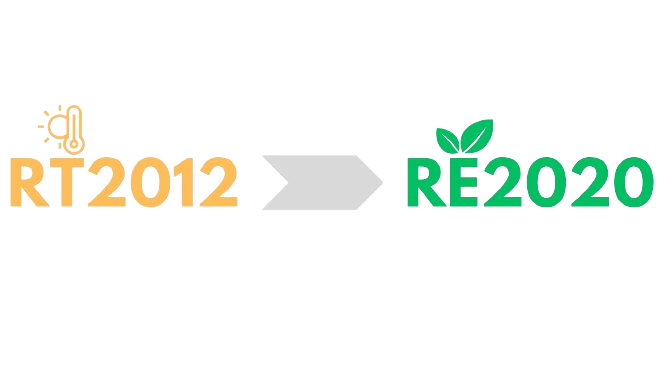Let’s start with a quick reminder of what is the 2020 environmental regulations, also known as the RE2020. It is the successor to RT2012 (Thermal Regulation 2012) and incorporates new requirements in terms of energy and environmental performance for new buildings.
The 2020 environmental regulations have had a significant impact on worksite monitoring in many industrial sectors. These regulations have been introduced to enhance environmental protection, reduce greenhouse gas emissions and promote more sustainable practices in the construction and public works sectors.
One of the key aspects of these regulations is the need for increased monitoring of worksites to ensure compliance with environmental standards. Companies in the construction sector must now comply with stricter requirements in terms of waste management, preserving natural resources and reducing their carbon footprint.

RT2012 and RE2020 are two French regulatory standards that govern the construction of new buildings. However, they differ in their objectives and areas of application:
RT2012 focused on the energy performance of new buildings. Its main objective was to limit the primary energy consumption of buildings by imposing thresholds that must not be exceeded for heating, air conditioning, domestic hot water production and lighting.
The RE2020 goes beyond energy performance alone by incorporating broader environmental criteria. It considers the complete carbon footprint of buildings throughout their life cycle, including the manufacture of materials, construction, use and deconstruction. In addition to energy performance, it takes into account the carbon footprint, resource management and other environmental aspects.
Mainly focused on energy consumption, RT2012 imposed precise limits on heating, cooling and lighting requirements. It assessed the building’s energy performance using an approach based on energy consumption.
In addition to energy performance, the RE2020 incorporates a global vision of environmental impact. It considers the entire life cycle of the building, taking into account the carbon footprint, the use of natural resources, waste management, and encourages the use of renewable energy.
RT2012 was based on primary energy consumption and bioclimatic need indicators to assess a building’s energy performance.
The RE2020 extends the calculation method by introducing new indicators such as the Bilan Bâtiment Carbone (BBC), which takes into account all the building’s greenhouse gas emissions over its entire lifecycle.
These differences show a significant shift in requirements and objectives, from regulations focused on energy to a more holistic approach that takes into account the overall environmental footprint of buildings.
In 2024, the full implementation of the RE2020 should be underway, or even already operational in some construction projects. Here are some likely impacts for this year:

The RE2020 mainly affects new housing in France, such as :
Single-family homes: single-family residential buildings are included in the RE2020 standards. New single-family homes must comply with the energy and environmental criteria set out in these regulations.
Flats: residential buildings comprising several flats or housing units, whether intended for rental or ownership, are also subject to the RE2020 standards. This includes new apartment complexes.
Social housing: the construction of social housing, which aims to provide affordable housing for people on modest or precarious incomes, must also comply with the requirements of the RE2020 when new.
Student or tourist residences: buildings intended to accommodate students, holidaymakers or tourists must comply with the RE2020 standards if they are newly built.
The authorities could step up awareness-raising and training programmes for construction professionals. This could be done through initiatives such as seminars, specialised training, practical guides or online resources to help architects, engineers and contractors understand and apply the RE2020 standards. These programmes could also include case studies, examples of good practice and tools to assess the compliance of projects with regulatory requirements.
To ensure compliance with the RE2020 standards, monitoring and control mechanisms could be strengthened. This could involve setting up more rigorous certification processes, on-site inspections to check that buildings are compliant, and financial incentives or penalties to encourage compliance. Authorities could also invest in monitoring tools and technologies to assess the energy performance of buildings over time, ensuring that standards are maintained.
Regulation could do more to encourage innovation and research in sustainable construction. This could take the form of funding for research into new sustainable building materials, innovative technologies to improve the energy efficiency of buildings, or initiatives to integrate circular economy concepts into construction. These advances could be incorporated into future revisions of the RE2020 to reflect technological advances and scientific discoveries aimed at reducing the carbon footprint of buildings.